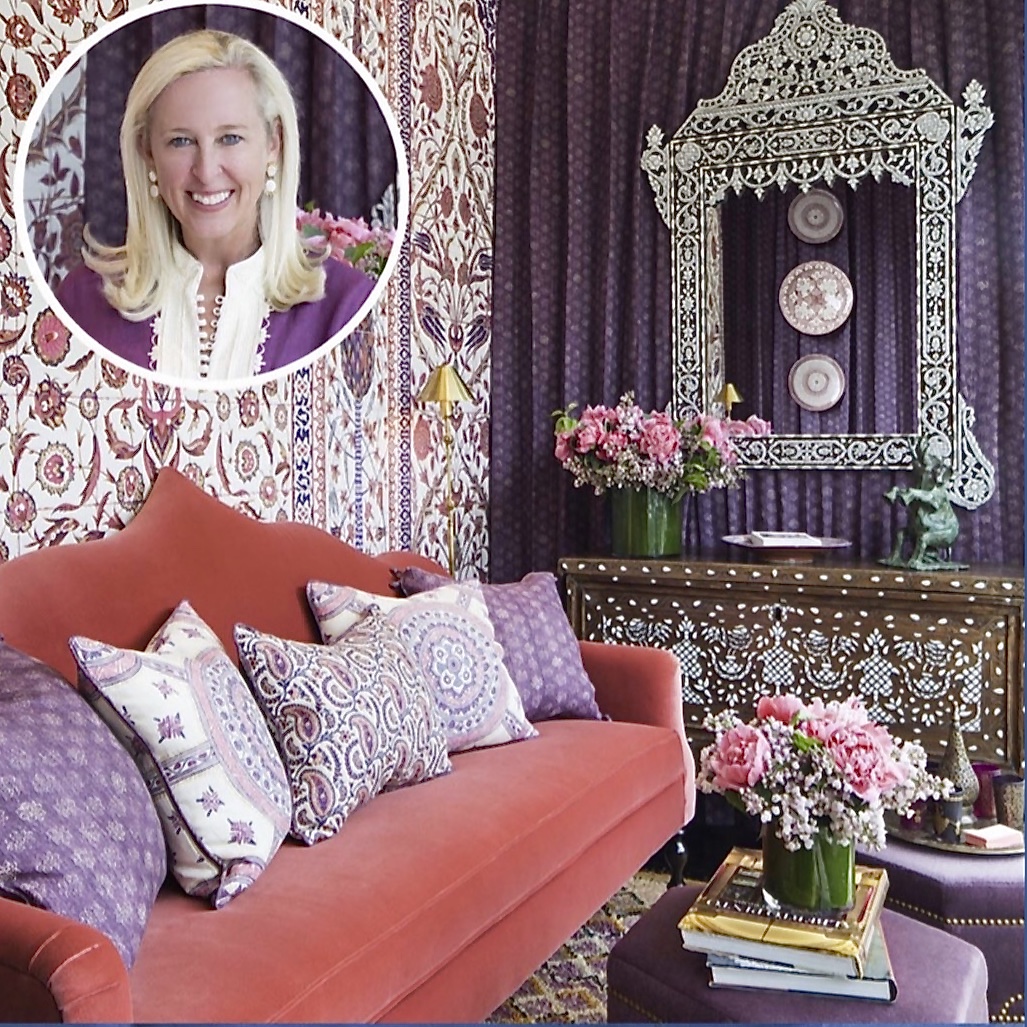“I’ll tell you a Venetian story spanning two centuries. Five generations, six brands, five continents: our history, yesterday, today and tomorrow.” – Alessandro Favaretto Rubelli

View from The Gritti Palace, Venice
There is nothing better than experiencing a culture through the eyes of locals. I just returned from an incredible journey with the Rubelli family discovering the majesty of Italian manufacturing seeing their showrooms, mills, projects and archives from Milan to Venice. In between our tours looking at Italian textiles, leather, glass, art, and architecture, they graciously treated us to the most incredible meals, fellowship, and education that makes their Venetian heritage so unique. The Rubelli passion, generosity and hospitality were beyond extraordinary.

The Rubelli Showroom, Milan
The Rubelli Group oversees Rubelli Venezia, Rubelli Casa, Kieffer, Donghia and Armani/Casa. We began our tour at the Milan Showroom seeing their new Rubelli Casa Line. From there, we set off for Como to tour the Rubelli mill seeing the original looms from the 19th century where fabrics are still made by hand as well as with the the latest technology. Visits to yarn dying and textile finishing facilities gave us a comprehensive understanding of just how much work goes into creating every single fabric.

Andrea Rubelli explaining the process
The company came into being at the end of the nineteenth century when Lorenzo Rubelli took over Giobatta Trapolin’s firm, renowned for its production of braid, two-pile velvet, soprarizzo, lampas and brocade as reproductions of antique fabrics. Lorenzo Rubelli bought the firm in 1889 and it was an instant success. Lorenzo and his son Dante Zeno expanded the production and trade of fabrics in Italy and Europe, and the varying fortunes of the Venice firm which, during the First World War, forced Dante Zeno to move looms and workforce to Florence to protect their safety. Production was diversified over the years, moving towards a more contemporary style yet without ever abandoning the themes which had made Venetian textiles famous over the centuries. Rubelli worked with eclectic artists such as Guido Cadorin and Umberto Bellotto and later Vittorio Zecchin and Gio Ponti. The company’s fabrics were displayed with success first at the various International Decorative Arts Exhibitions at the Villa Reale in Monza and later at the Venice Biennale and Milan Triennale, and were also used for high-status commissions, such as the furnishing of the royal train in 1928.


Handmade silk velvet requiring one month to make one yard. Artist weaves 5 cm per day.

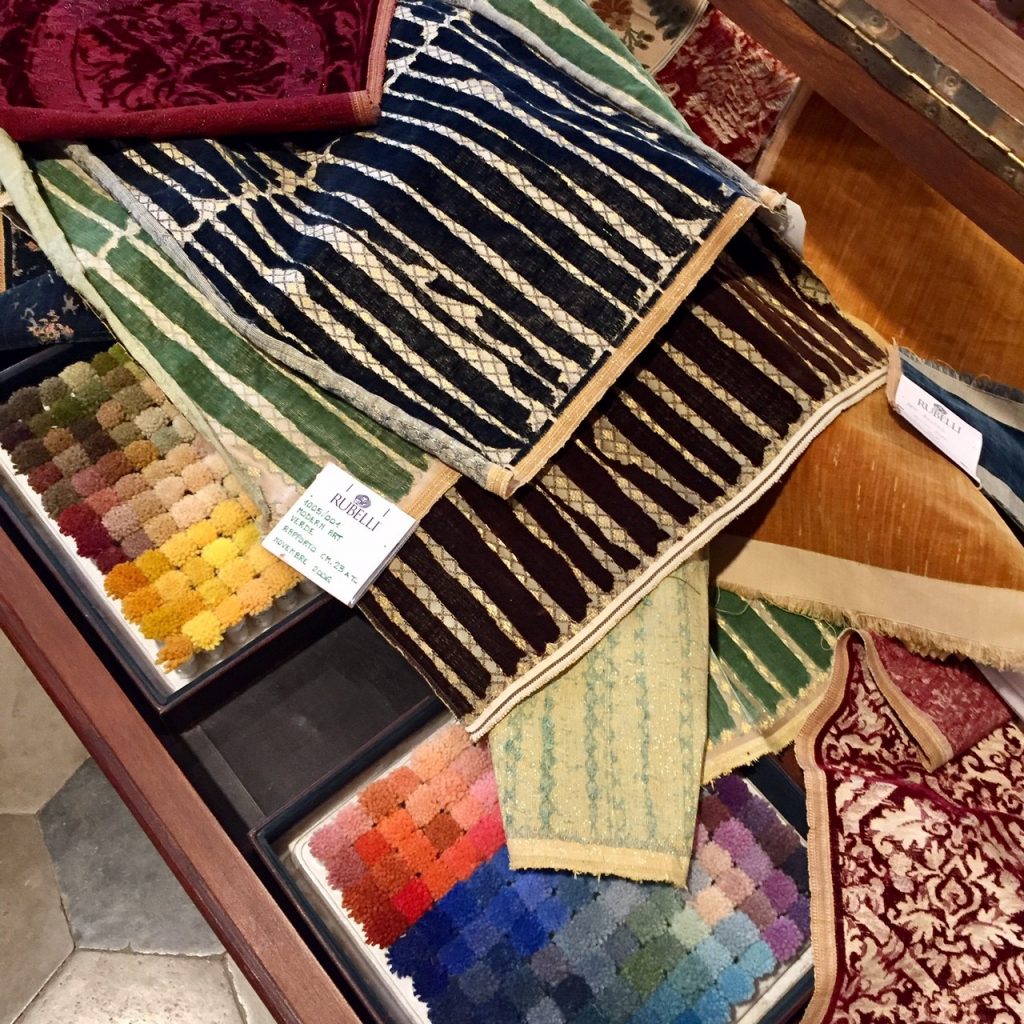
The finished products…One of Rubelli’s iconic patterns that was originally created in the 1940s


The pattern used for the 19th century looms


Curtain made for the Bolshoi Theature in Moscow with 500 kilos of 24K gold thread
After the Second World War Alessandro Favaretto Rubelli took over from his grandfather Dante Zeno and started to edit an own Rubelli collection, introducing a distinctive style. The hand-loomed velvet was chosen by famous names in fashion such as Roberta di Camerino, who used them to create the label’s exclusive bags (there is a famous picture of Princess Grace of Monaco from 1958, on an official visit to Venice, with the legendary Bagonghi bag).
From the historic Venice location of Palazzo Corner Spinelli, Alessandro Favaretto Rubelli conquered not only Europe but also the US and the emerging Asian markets. With the extraordinary quality of the damask, silk and velvet produced in its own weaving mills, Rubelli became one of the four most prestigious companies in its field.

Fabric Principessa Kocacin made with 10,000 needles on the latest 21st century technology

Delightful lunch in Como

Our view from Hotel Villa Flori in Lake Como

Myself, Cindy Witmer, Teresa Manns, Frank Ponterio, Amanda Reynal and Danielle Rollins
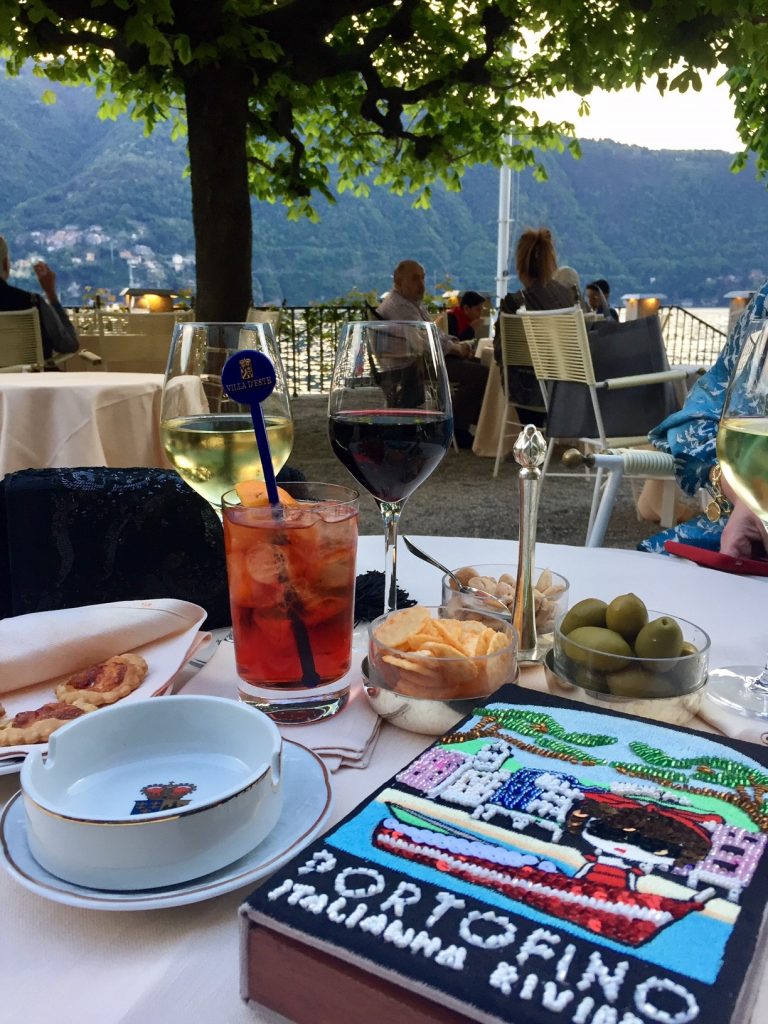
Cocktails at the legendary Villa d’Este (more to come)

Twilight at Villa D’Este
Our second day began with a visit to Studio Art near Vicenza and a behind the scenes look at the Conceria Di Montibello Tannery. In addition to providing leather for the interior design industry, the tannery also supplies all the fashion houses with their leather. A heliopad is located on top of the factory to accomodate such fashion icons as Miuccia Prada, Giorgio Armani, and Donatella Versace. We were awestruck by the versatility we saw at the tannery and came home overflowing with ideas for future design projects.

With Carmina Roth admiring the leather upholstered car at Studio Art


In our protective gear for the tannery.
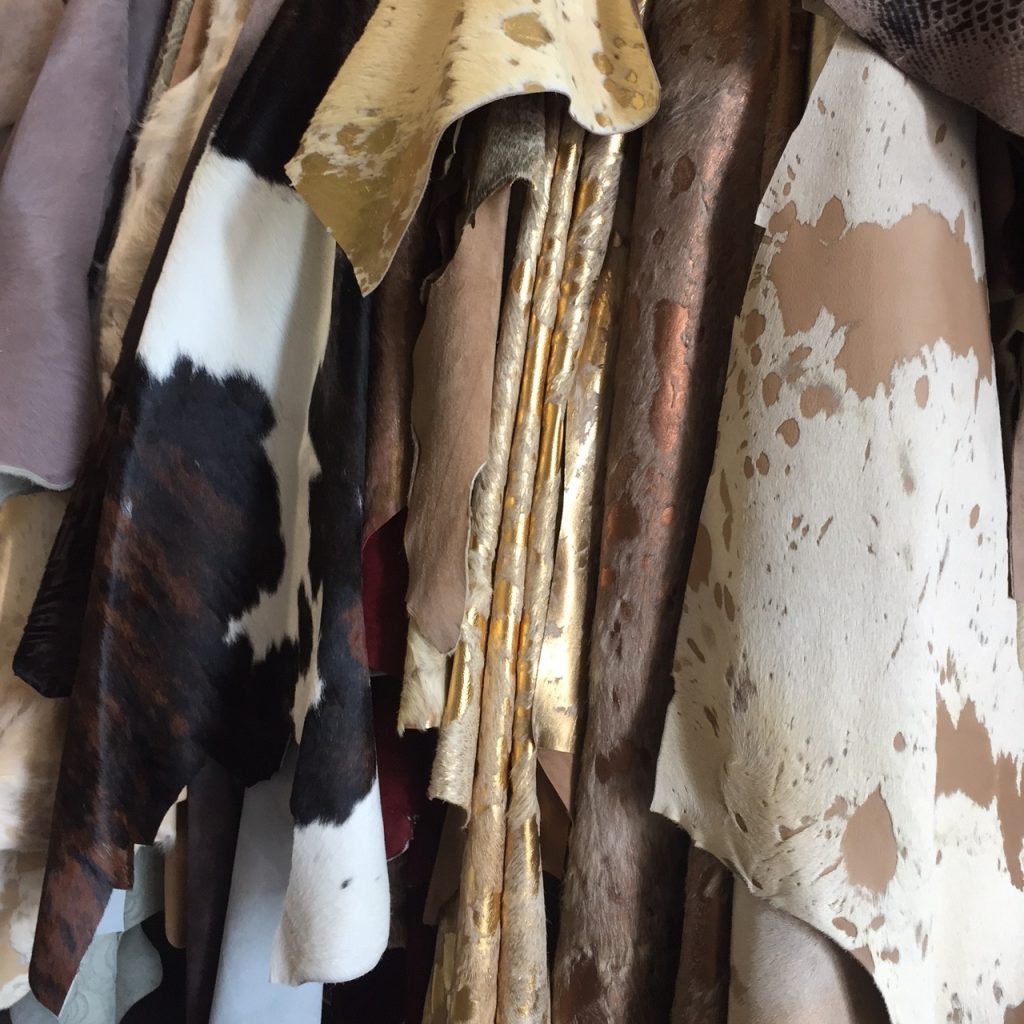
Fashion hides at Studio Art

Cutting edge contemporary hides at Studio Art
After an enlightening morning, we followed in Palladio’s footsteps having lunch in his birthplace of Vicenza before a tour of Villa Rotunda…every design and architecture buff’s dream!

Lunch in Vicenza

Following in Palladio’s footsteps before Villa Rotunda

Villa Rotunda (more to come)
We were greeted in Venice by sunny skies and balmy breezes en route to our incredible hotel on the Grand Canal…The Gritti Palace (which will have a separate post detailing the incredible renovation filled with Rubelli and Donghia fabrics)

Arriving in Venice with Amanda Reynal

The iconic Gritti Palace (more to come!)
As I mentioned earlier, travelling with the Rubellis gave us access to places and experiences that were just unbelievable. Our second day ended with a private tour and dinner at the Peggy Guggenheim museum….my favorite house museum in the world. This experience with all get a separate post!

Cocktails at sunset at the Peggy Guggenheim Museum overlooking the Grand Canal
Our last day began with a tour of the Gritti Palace and the Palazzo Corner Spinelli on the Grand Canal to hear the Rubelli’s story of silk in Venice. One of many “pinch me” moments on the trip, I was awestruck by the archives, architecture and charm of the Rubelli legacy. As a design student, I was enchanted by Venetian design and learning about the silk trade in Textiles 101. I had been to Venice before but seeing it through the eyes of the Rubellis brought everything into a clearer focus and I felt like I was seeing all of these masterpieces for the first time.

Palazzo Corner Spinelli

View of the Grand Canal from the Palazzo
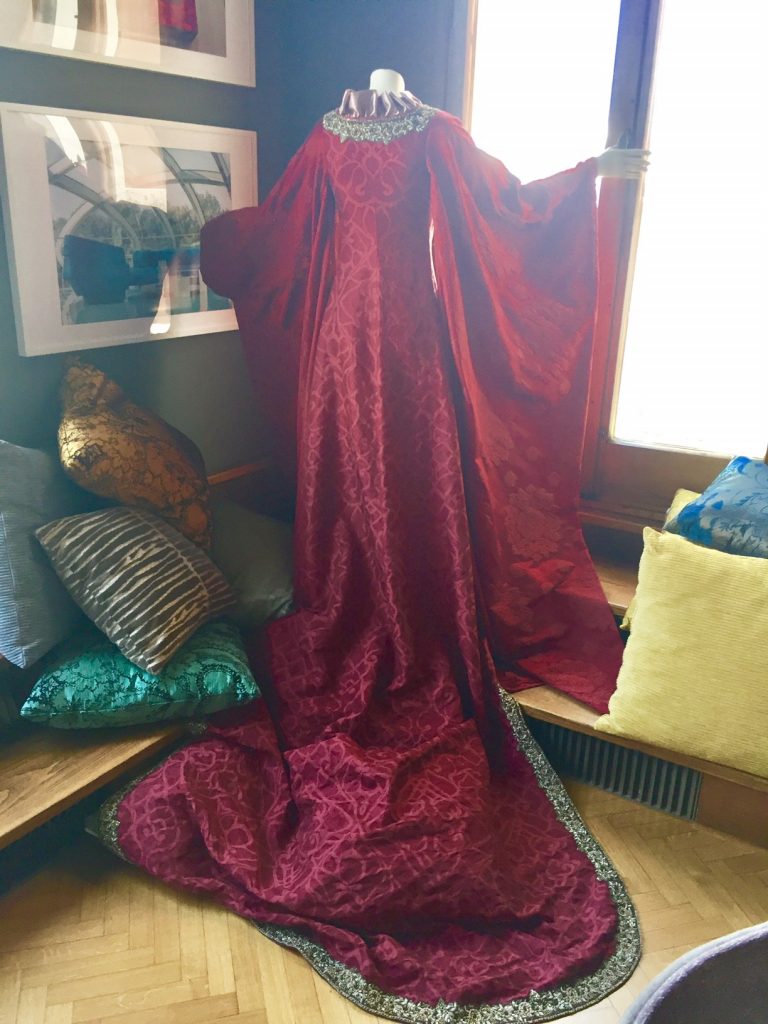
Brilliant displays in every corner of the Palazzo showcasing the Rubelli fabrics

Nicolo and Andrea Rubelli sharing the story of silk in Venice

Exquisite architectural details
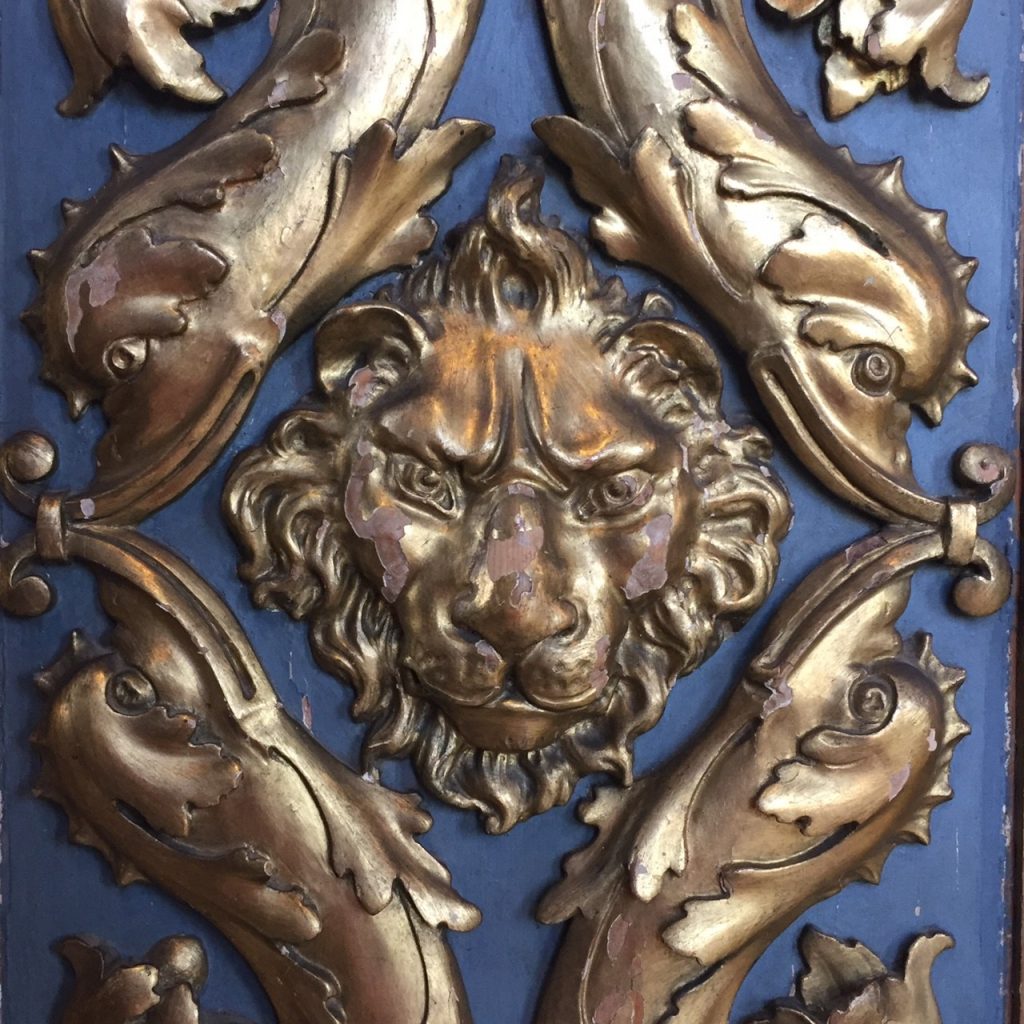
The lion, symbol of Venice and St. Mark who brought the gospel to Italy


One of the 6000 antique textiles in the Rubelli archives

Paper pattern and finished product
In addition to seeing the archives, we also got to see the latest collection of Rubelli fabrics. Celebrating the beauty of diversity, the collection focused on contrasts as harmonious differences blending 18th century motifs and 20th century modern masters all touched with a pop vibe. The images below by Giovanni Gastel are pure delight.



Next, it was off to the Venetian Lagoon for another lovely lunch on the island of Torcello, founded in 421.

Locanda Cipriani on Torcello
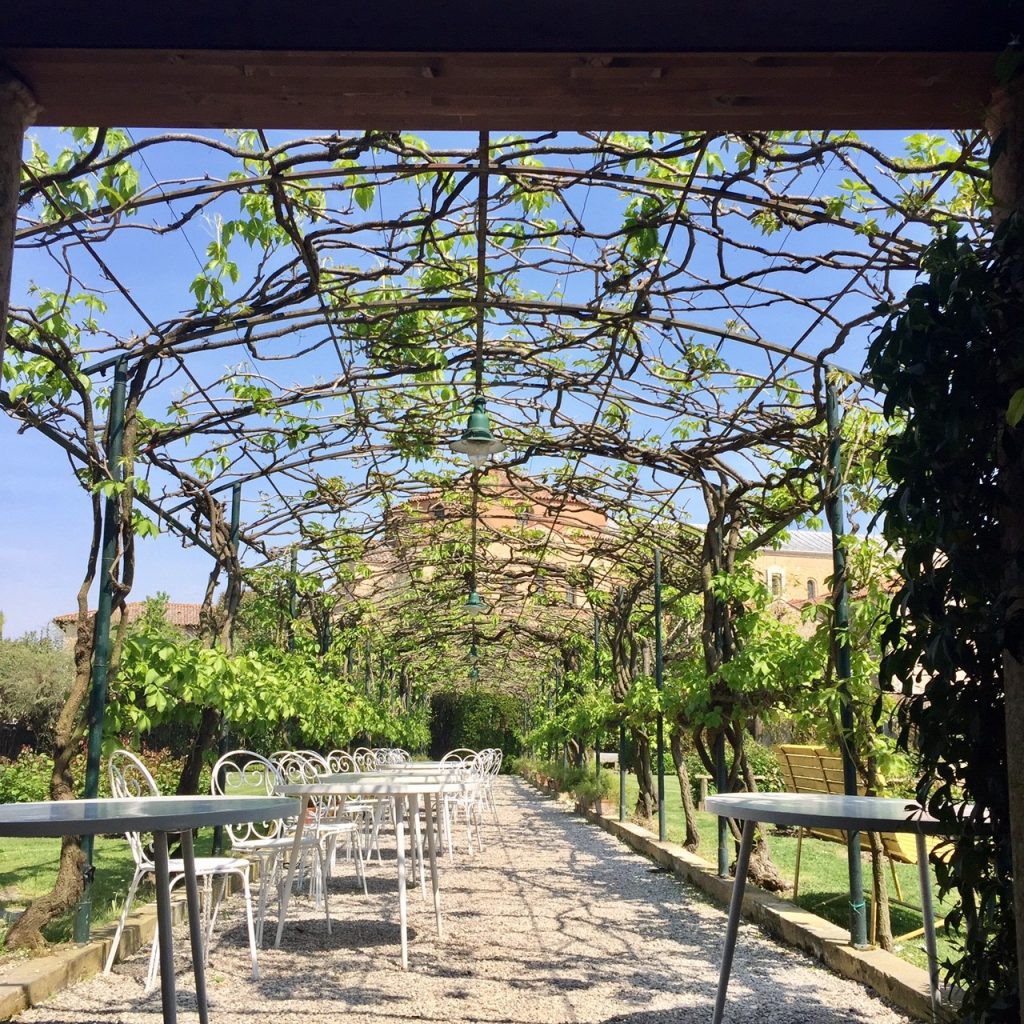

Our Italian food gurus…Cindy Witmer and Frank Ponterio

First (of five!!!!) courses


Lunch overlooking an 8th century basilica

Candy colored chandelier at the Seguso Factory on Murano (more to come!)

With our enchanting hostess Sandrina Rubelli

“A work becomes art when pieces of different sizes and colours are placed together in harmony to give birth to something new an unique, maybe even magical.” – Nicolò Favaretto Rubelli

Mille Grazie to the Rubelli family, Becky Birdwell, Peter Sallick and the Design Leadership Network for organizing such a magical design adventure and to our group of fellow designers who made the trip so much FUN!
For more design inspiration, please follow along on Instagram, Pinterest, Facebook, Twitter and subscribe to Bespoke Banter.



